Just so you know, this post contains affiliate links. If you book a tour, hotel, or buy something through one of these links, I may earn a small commission—at no extra cost to you. It helps me keep this blog running and full of travel tips. Thanks for the support!
Bath is a city where history, culture, and charm collide, making it one of England’s must-visit destinations. From the Roman Baths to the grand Georgian crescents, every corner of this UNESCO World Heritage city tells a story. But beyond the famous landmarks and tourist hotspots, there’s a local side to Bath that many visitors miss.
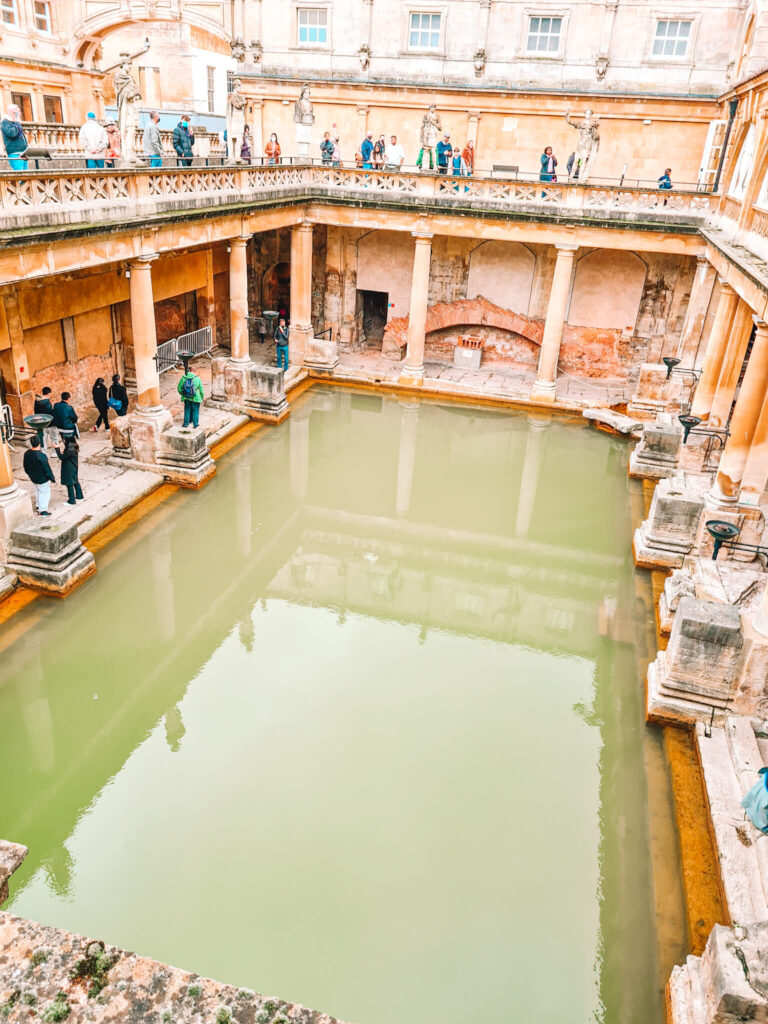
Bath has captured my heart over the years. Whether it’s the golden glow of the Georgian buildings at sunset or the simple pleasure of sipping coffee in a historic bookshop, this city offers experiences you won’t find in a typical guidebook. As someone who has explored Bath inside and out, I’m sharing my local’s guide to Bath to help you discover the very best of this remarkable place.
This travel guide will help you navigate the city like an insider, ensuring you make the most of your time in this beautiful and historic destination.
Is Bath safe for solo female travellers?
Bath is a very safe city. It has a strong student scene, so there are often people about at night time. However, be aware that like much of the UK, restaurants and clubs in Bath will close earlier than in many European cities. This means that in the very middle of the night, it is likely the streets will be empty. However, given it is a small city, you’re unlikely to need to walk far to wherever you’re going. Bath is a great city for solo female travellers. There’s a strong hostel scene, and lots of bars and cafes for hanging out. It’s well connected, particularly locally, and the food is great!
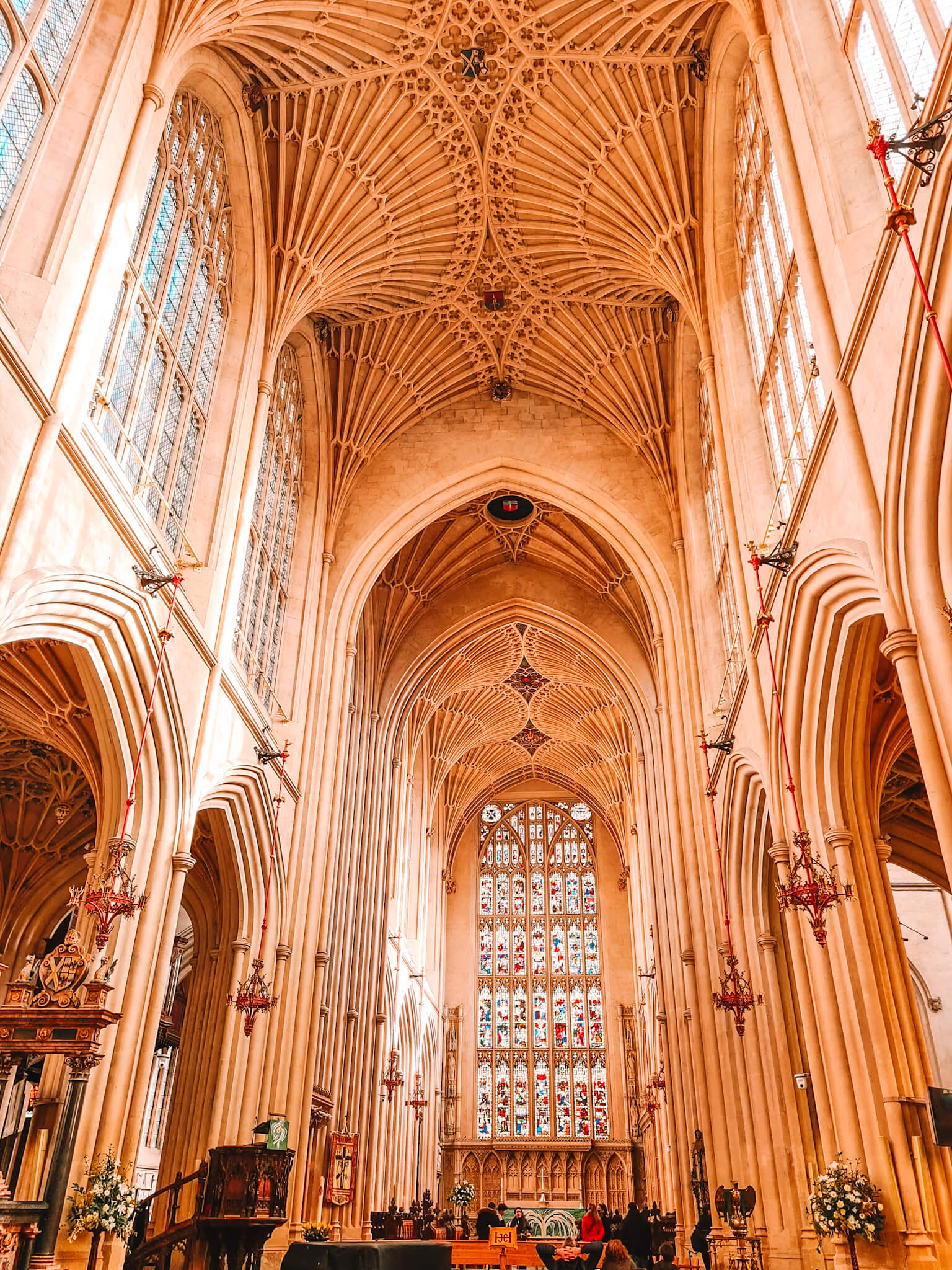
A local’s guide to the top things to do in Bath
1. The Roman Baths
The best thing to do in Bath is enjoy the varied history on offer. Bath got its name from the natural hot springs under the city andt these have been used at least since Roman times. The Romans, who loved a hot bath, built an elaborate set of pools in the city. These have been modified over the years, including in the 18th century when taking the waters became extremely popular.
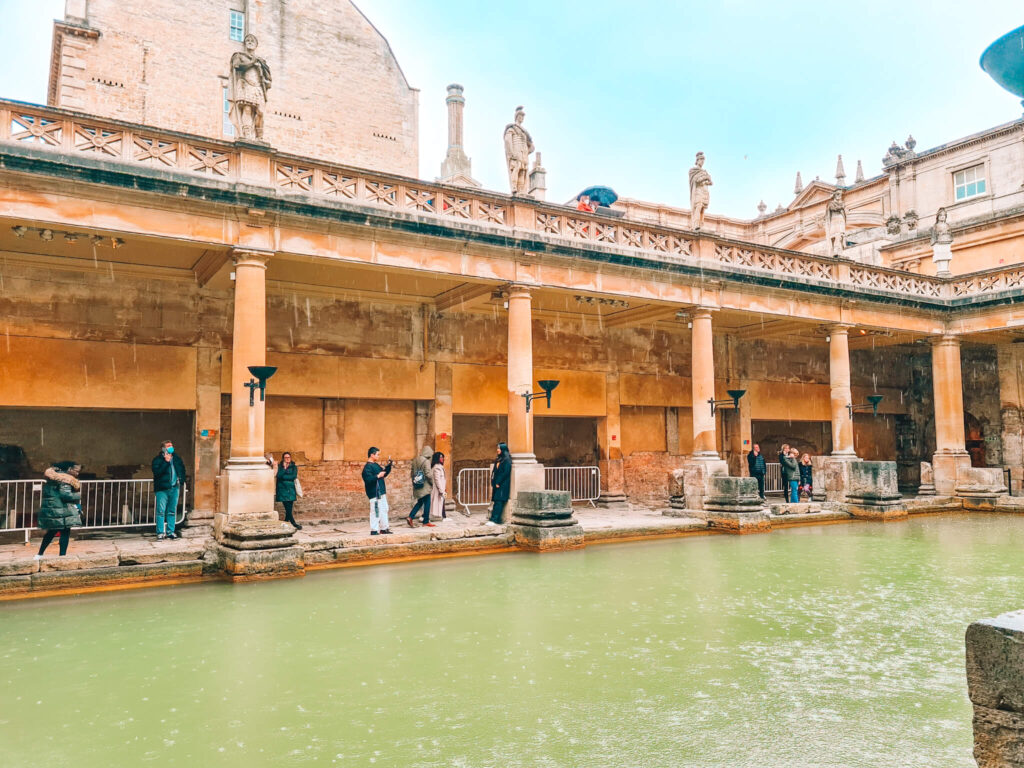
The museum is well set up – there are lots of interactive/hologram displays to show how the Romans would have used them. But for me, the green water of the pool itself, surrounded by the beautiful statues of Roman gods, is the showstopper. My favourite spot shows the baths and statues with the mediaeval Abbey behind, really highlighting the complexity of Bath’s past.
To visit the Roman Baths, you need to book in advance and select a timeslot (be aware here of possible train/coach delays if doing so on the day you arrive). On arrival in Bath, it’s easy to find them, as they are in the centre of the city next to the Abbey – they can’t be missed!
2. Take the waters at Thermae Bath spa
Next on the list of things to do in Bath is relax! Once you’ve seen how the Romans enjoyed the hot springs, it’s time to enjoy them for yourself. The very modern Thermae Bath Spa is a short walk from the Roman Baths. It offers a number of different pools giving you the opportunity to soak in waters which have been seen as beneficial to health for at least 2000 years. This includes the famous rooftop pool, overlooking the city, which absolutely cannot be missed.
You can also book spa packages and treatments at Thermae, including massages. It’s a lovely slice of luxury!
Booking is essential, as it gets very busy. You get a two hour hour slot to enjoy all the baths have to offer.
3. Live out your Jane Austen and Bridgerton dreams
Bath is famous for being the location of choice to film period dramas such as Bridgerton and almost every Jane Austen adaptation ever. While the Romans founded Bath, it then declined in popularity. A boom in the Georgian period (the 18th and early 19th centuries) saw the city thrive as the upper classes invested in the healing power of the hot springs. This period saw the building of almost all of modern Bath.
One of the top things to do in Bath is taking time to wander the streets, admiring the beautiful Georgian architecture. The main shopping streets still have their Georgian splendour. There are some beautiful covered arcades, such as The Corridor, which became popular in Georgian towns.
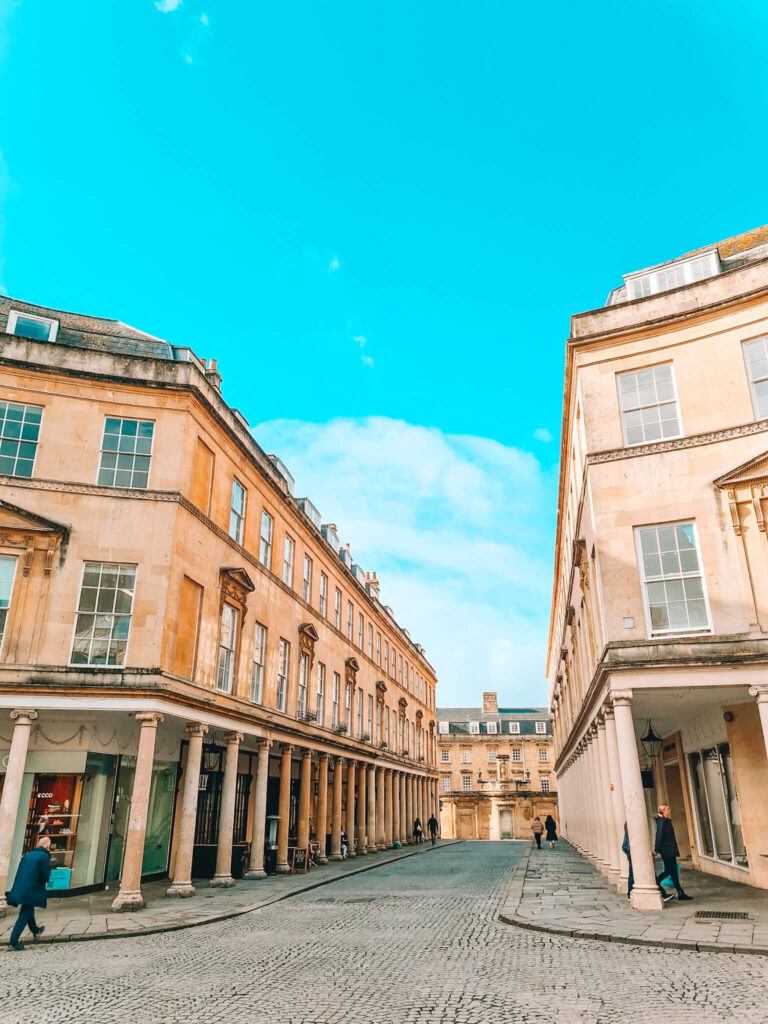
It’s also worth walking out of the centre a bit to find the wide, magnificent side streets. My favourite is Great Pulteney Street, where the lack of traffic makes it easier to imagine the street filled with horse drawn carts. I love looking at the sides of the buildings, where you can see bricked up windows – a casualty of the ‘Window Tax’ of 1696 and later variations. This imposed a tax on buildings with a certain number of windows, which led to many being bricked up.
4. Visit the The Royal Crescent
No trip to Bath would be complete without seeing the most famous street in the city. The Royal Crescent is a bit of a walk out of the city centre, but well worth the trip. The immaculately preserved buildings provide a sense of the splendour of Georgian Bath, as well as a beautiful view over the city.
Begun in 1767, it was severely damaged during the Second World War and subsequently repaired. You can understand the lives of Georgian Bathonians through visiting No. 1 Royal Crescent. Book your visit in advance for £15 and note that it isn’t open on Mondays.
5. Experience yet another period of the city’s history at Bath Abbey
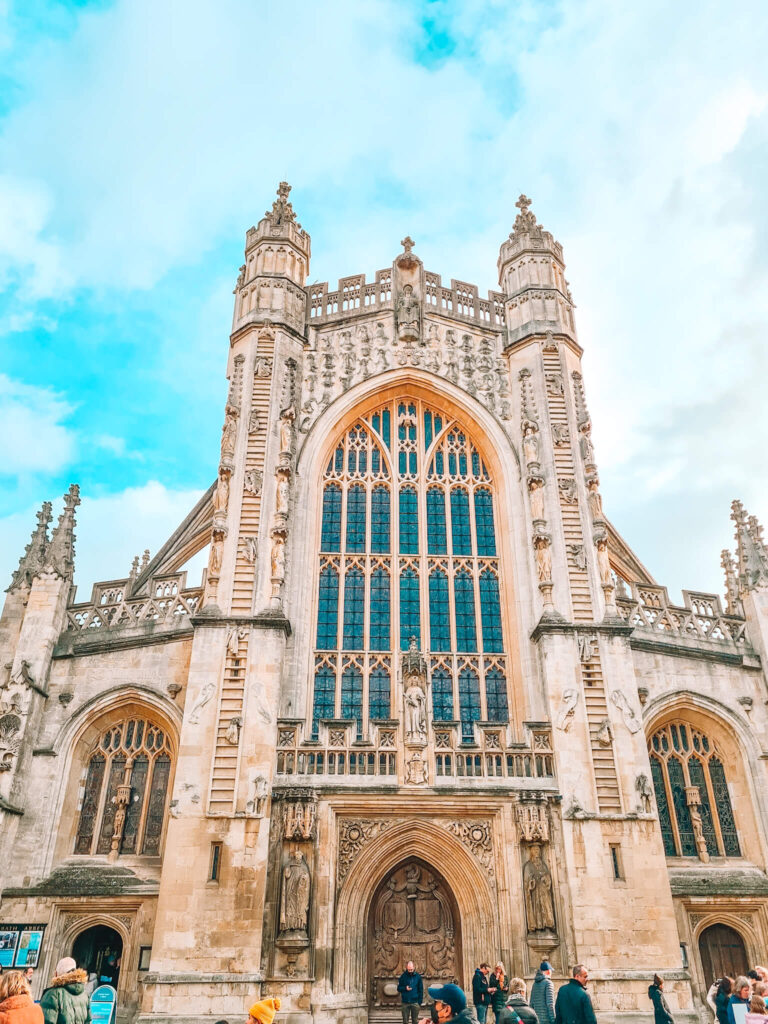
Once you’ve been to the Roman Baths and the Royal Crescent, it’s time for a different historical era. It’s impossible to miss Bath Abbey, built from 1499 onwards. It dominates the city centre, rising above the smaller buildings. It’s Gothic in style, with elaborate masonry both inside and out. It currently costs £7.50 to visit (summer 2024) and the visit is worth it to understand a different time in Bath’s history.
The courtyard outside, next to the Roman Baths, will also be full of people taking picture. The Abbey makes a stunning backdrop for your next insta post.
6. Try a Sally Lunn bun, the oldest of the foodie things to do in Bath
During mediaeval and Georgian times, Bath was famous for Bath buns, a bready delight. You can experience that time in history by heading to Sally Lunn’s Historic Eating House, which has served this traditional meal since the 1680s. It’s one of many tasty things to do in Bath!
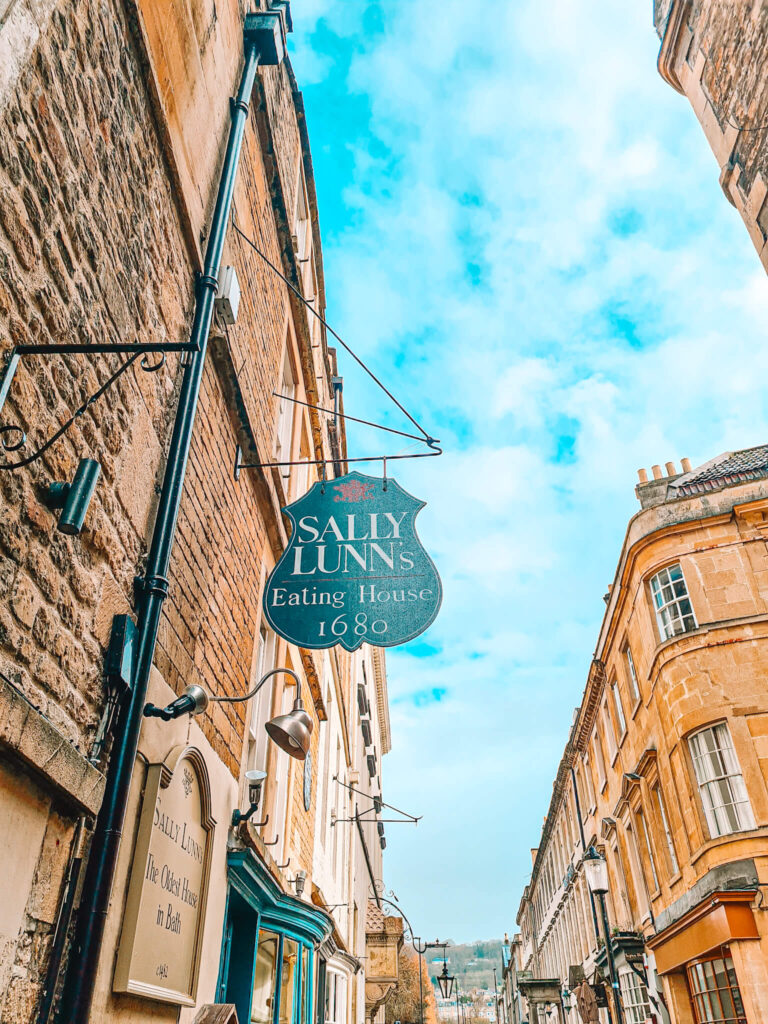
Easily found in the centre of the city, on a small lane, you might have to queue for this famous restaurant. However, it’s worth the wait to sit in the tiny restaurant. It’s as tiny and crooked as it would have been during Georgian times. There is also a small museum downstairs which shows what the kitchen would have originally looked like.
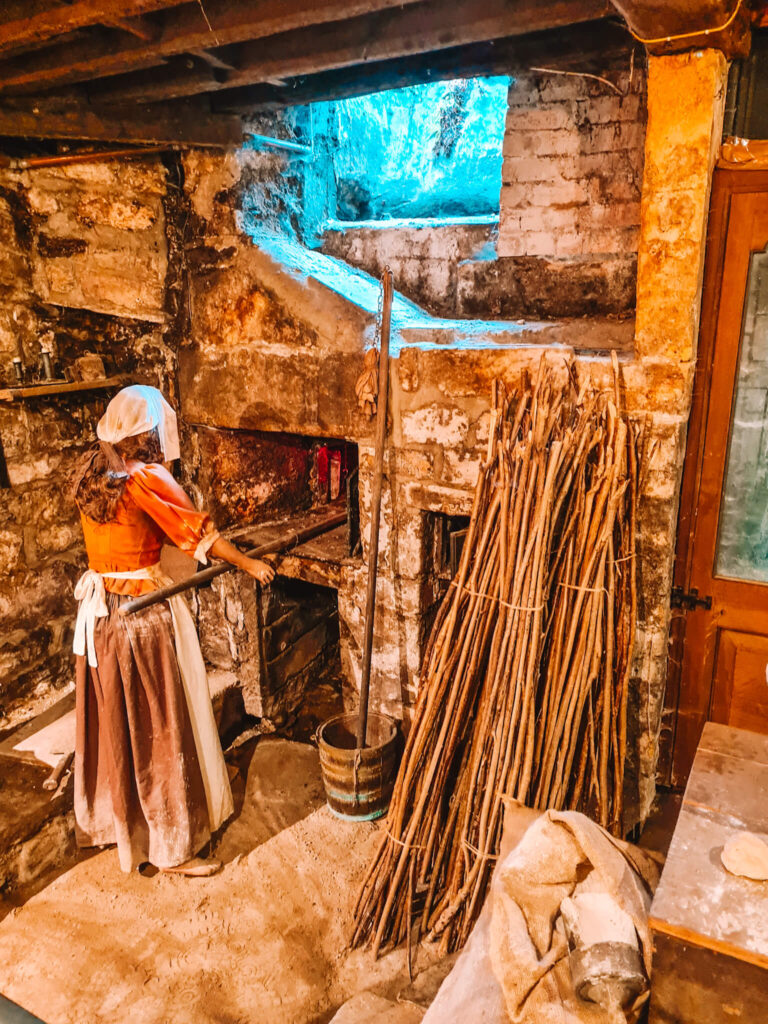
Total honesty – the buns themselves are not that great. They’re very plain bread with an assortment of different toppings available. However, for me it was worth the experience to sit in a shop that was so unchanged from its heyday, eating the same food as people would have eaten over 300 years ago.
7. Pulteney Bridge and the weir
Built in 1770, Pulteney Bridge is one of the most famous images of Bath. It crosses the River Avon, with a weir underneath the bridge providing a beautiful shot of the water. Pulteney Bridge still retains the shops over the bridge that would have been typical of all bridges at that time – one of only three such bridges in the world. As well as taking your pictures from the riverbank, you can pop into the coffee shop and sit on the bridge itself, looking down the river.
It’s also worth popping around to the back of the bridge, on the way to Waitrose, to see the way the buildings stick out at the back over the water!
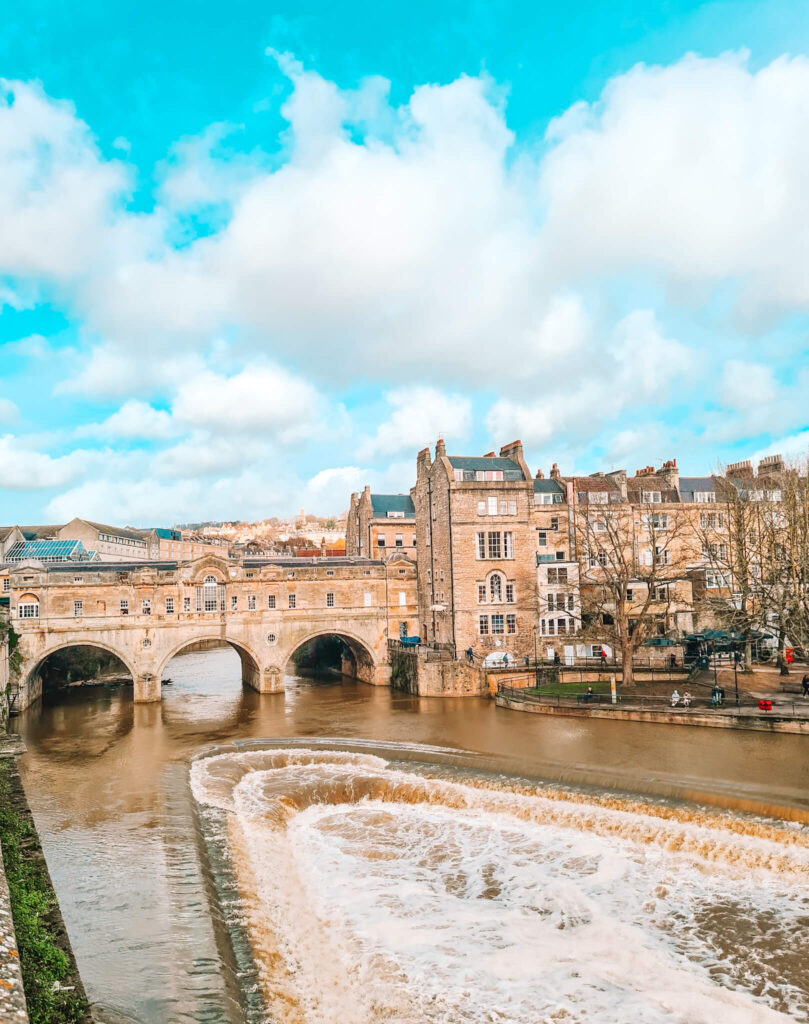
8. Visit bookshops
Bath is a bit of a haven for bookshops, both for new and second hand tomes, and one of m favourite things to do in Bath is wander around them. A few of my favourites are:
- Topping & Co – this bookshop near the river occupies a glorious, vaulted space, making it one of the most beautiful bookshops I’ve ever seen. Well worth popping in to have a browse, or check out their diary of regular evening events.
- Mr’s B’s Emporium – another delightful independent bookshop in Bath. In contrast to Topping & Co, this smaller space focuses on beautiful murals and has a number of small reading spaces, particularly in the children’s section. It regularly wins independent bookshop awards and also hosts regular evening events.
- George Bayntun – this second hand bookshop by Bath station is another place in the city that takes you back to a different century. From the moment you have to ring a bell to enter, it feels like you’re entering a Georgian bookshop, which is only increased by the high ceilings and old books on display. I love wandering in here to look at the rare books, and there is also a section with more modern second hand books downstairs.
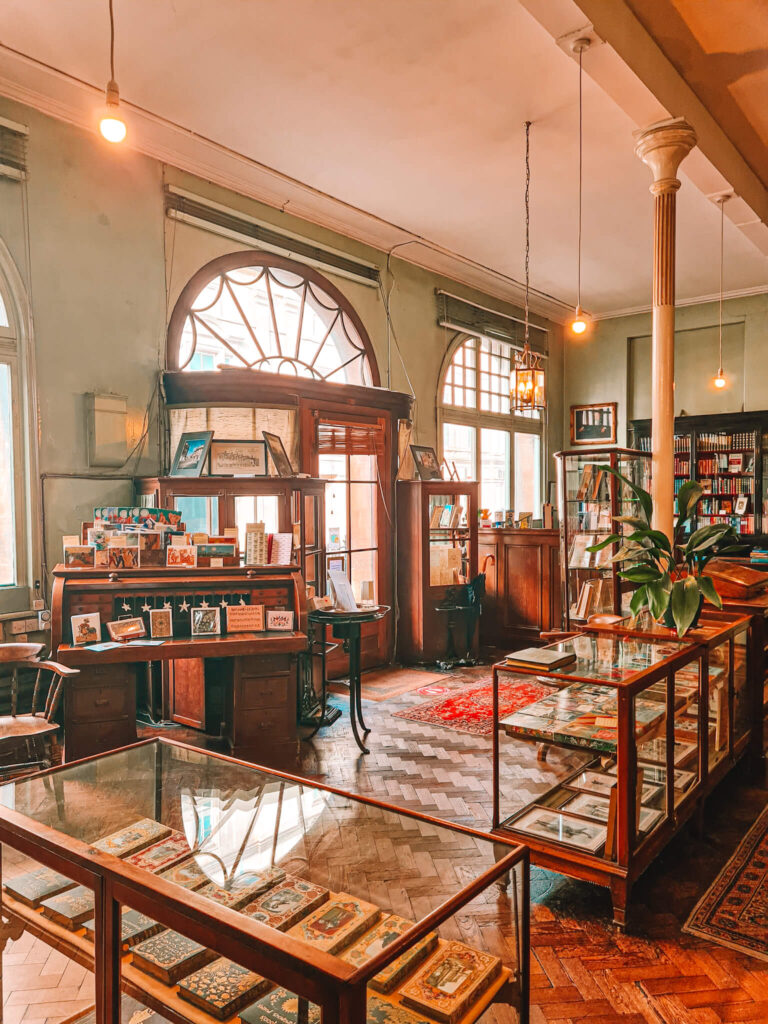
9. The Jane Austen museum
If you’re a big Pride and Prejudice fan, this is the place for you! The Jane Austen Museum focuses on the life and works of the famous author. You are taken through the museum by ostumed guides and you even have the opportunity to dress up yourself!
You can try their ‘Afternoon Tea with Mr Darcy’ in their Regency Tea Room.The only irony is that Jane Austen hated Bath and tried to never visit, but if her ghost is still around, that ship has sailed as she’s well and truly associated with the city.
Frequently Asked Questions
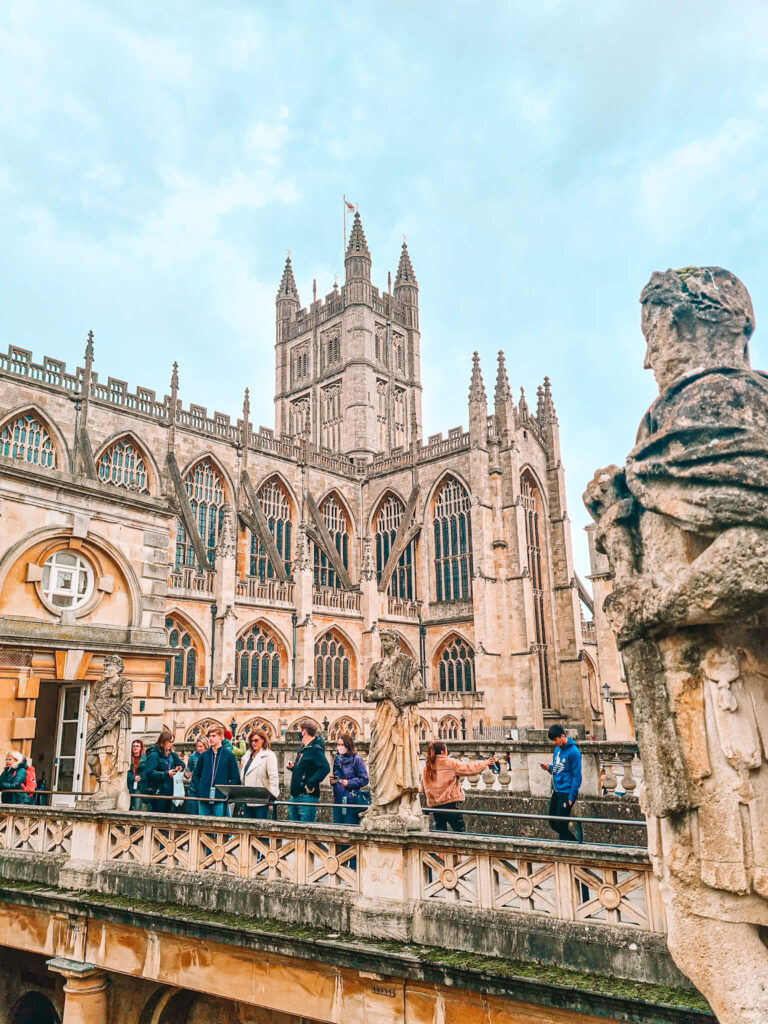
When is the Best Time to Visit Bath
The best time to visit Bath depends on what you’re looking for. Spring (March–May) offers blooming gardens and mild weather, while autumn (September–November) brings fewer crowds and a cozy atmosphere.
Summer is the busiest, with vibrant street performances and long daylight hours, but expect higher accommodation prices. You’ll also need to make extra sure that you book in advance for key attractions.
December is magical, thanks to the famous Christmas market, but book early! The city gets extremely crowded – if you are planning to visit the Christmas market, I would suggest trying to go on a weekday, during the day or early evening.
How to get to Bath: Train
There are intercity/fast train services from London, departing regularly from London Paddington (about 1.5h). You can also get trains direct from Cardiff. The price for this varies wildly (as all long distance trains in England do).
It is best to book 6-8 weeks in advance if possible, when ‘Advance’ tickets go on sale. Many train companies let you set an alert for this. I personally use Trainline which offers this option. If you’re too late for this, book as quickly as possible. ‘On the day’ fares in the UK are exceptionally expensive and prices go up every few days.
There are also trains from Bristol, the next nearest city (about 20 minutes by train) and from a variety of destinations across the south west of England. Local trains are not subject to the same price variations as long-distance trains. You won’t save much by booking ahead (maybe £1-£2). If you use Trainline, it’s cheaper to book on the day as they waive their service charge for on the day bookings.
Be aware that if you do take the train, the current provider Great Western Railways (GWR) is known for being unreliable. You are likely to be delayed so build this into your plans. This is especially if you are booking something with a timeslot for shortly after you arrive.
Sundays are particularly bad for train travel anywhere in the UK, as services are more expensive, less frequent, busier, and it is more likely there will be rail replacement services due to repair work. You can check for rail improvement works/rail replacement buses on www.nationalrail.co.uk .If you’re going for a weekend, try to return on a Monday if possible.
How to Get to Bath: Bus
There are good bus links into Bath from the surrounding areas, including Wiltshire, and the bus station is in the centre of the city.
There are also coaches to Bath from London Victoria bus/coach station – this is a few minutes walk from the train station of the same name. These can be booked via National Express which runs several coaches a day. This is usually substantially cheaper than the train. However it is less comfortable and also subject to delay due to traffic (particularly on Fridays and Sundays).
Be aware that coach travel in the UK does not offer the same level of comfort as in some other countries (e.g. South east Asia, South America). The seat size is standard aeroplane seating no matter the length of your journey and there is no entertainment on offer.
How to Get to Bath: Car
I wouldn’t recommed driving to Bath if you have an alternative. The city is well served by public transport, and parking in the city centre is very limited. It’s best to avoid driving unless mobility issues make this essential for you.
If you do decide to drive, research a variety of parking options in advance, as it’s likely that some will be full on the day.
How to Get to Bath: Air
The nearest airport is Bristol airport. There is a direct bus by Airdecker from Bristol airport to Bath. This departs hourly. It currently costs £17 one way for an adult (summer 2024). If you are planning to fly to Bath, Bristol airport would be my strong recommendation. Flying into Bristol is quick and painless, but if you are flying home from Bristol, be aware that the security queue can be exceptionally long at peak times (particularly 4am-7am). It can be best to leave extra time.
There are a few other local airports that you might also fly into, particularly if you are coming from Europe. Cardiff is the easiest of these, with regular trains from the city centre to Bath. There are also airports in Portsmouth and Bournemouth, though these are significantly more complicated to travel to/from.
Luggage storage in Bath
One of the great things about Bath is that there are a number of luggage storage facilities near the train station if you arrive before your check in or have a late departure. These are clustered opposite the station and easy to find. This can really help you to make the most of a weekend trip to Bath.
Where to stay in Bath
Bath offers a range of accommodation for every budget:
There are a number of backpacker hostels including Bath Backpackers. This is highly rated on both Booking.com and Hostelworld.com. It’s centrally located and has a range of typical backpacker facilities.
There are also more high end offerings including the Abbey Hotel. This is located between the river and the Abbey. It has a nice outside area to eat or have coffee, and is highly rated on Google and Booking.com. I often have coffee here when I come to Bath.
If you are after luxury, try The Royal Crescent Hotel and Spa, set in the iconic Royal Crescent in Bath (see below). This five star historic hotel offers true luxury in one of the most recognisable historic spots in Bath.
For the most part, hotels and hostels are in the city centre, and walkable to the main attractions.
Whether you’re soaking in the thermal waters, strolling past Georgian townhouses, or indulging in a classic Sally Lunn bun, Bath offers a rich and immersive experience for every kind of traveler. With this local’s guide to Bath, you’ll be able to go beyond the usual tourist spots and uncover the city’s unique character, from its independent bookshops to its stunning riverside views. No matter how long you stay, one thing is certain—Bath’s timeless beauty and vibrant local scene will leave you wanting to return.





[…] to Wiltshire from Bath? Check out my article on Top Things to do in Bath to make the most of your stay in this historic […]
[…] as a result, the city retains it’s steep, narrow medieval streets leading down to the river. Like Bath, Porto is a UNESCO World Heritage Site, and just wandering the streets is a treat in itself, as you […]